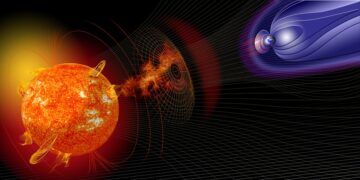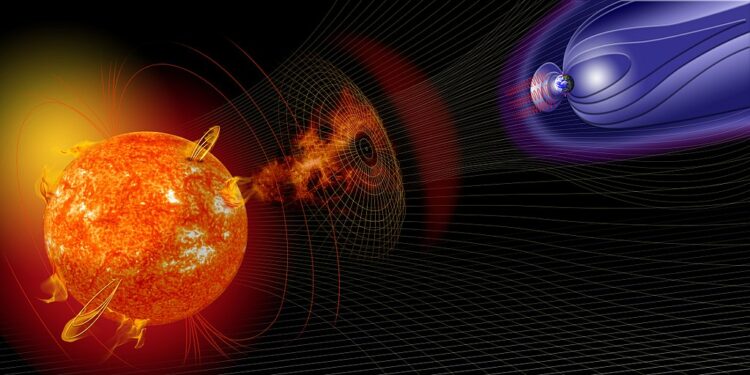The Sun, often seen as a life-giving force, occasionally reminds us of its incredible power in less friendly ways. Right now, Earth is in the path of a significant solar storm, an event that has scientists and space weather experts keeping a close watch. This storm, driven by Coronal Mass Ejections (CMEs) from the Sun, could have far-reaching impacts on our technology, from communication satellites to power grids.
A solar storm is essentially a disturbance in space weather caused by solar activity, like flares or CMEs. In this case, the Sun has emitted three powerful CMEs, with the first two being classified as M-class solar flares, relatively minor in strength. However, the third flare is a more intense X1.3-class event, packing a punch that could disrupt various technological systems on Earth. According to the Pakistan Space and Upper Atmosphere Research Commission (Suparco), these flares are expected to reach Earth within the next few days.
What makes this storm particularly concerning is its timing. The Sun is currently near the peak of its solar cycle, a period of maximum solar activity that occurs approximately every 11 years. During this time, solar storms become more frequent and intense, increasing the likelihood of disruptions on Earth.
At the heart of this solar storm are the CMEs—massive bursts of solar wind and magnetic fields released into space. When these CMEs collide with Earth’s magnetic field, they can induce geomagnetic storms, which are disturbances in Earth’s magnetosphere. The intensity of these storms is measured on the Kp index, where a higher number indicates a stronger storm. Currently, forecasters expect periods of G1 to G2 (Minor to Moderate) geomagnetic storms, which are likely to impact satellites and power grids.
This isn’t just a theoretical concern. In 1989, a similar solar storm caused a nine-hour blackout in Quebec, Canada, by overloading the electrical grid. Today, with our increased reliance on technology, the stakes are even higher. Satellites, which are crucial for GPS, weather forecasting, and communications, are particularly vulnerable. A strong enough storm could disable these satellites, leading to widespread disruptions.
The effects of this solar storm could be felt across various sectors. For the general public, the most noticeable impact might be interruptions in cellular phone service or GPS inaccuracies. For industries that rely heavily on satellite communications, like aviation or maritime operations, the disruptions could be more severe. There’s also the potential for radio blackouts, which can interfere with emergency services and military communications.
However, not all the effects of solar storms are negative. One of the more visually stunning outcomes of geomagnetic storms is the auroras,beautiful displays of light in the sky, commonly known as the Northern and Southern Lights. During a strong solar storm, these auroras can be seen much farther from the poles than usual, providing a rare treat for skywatchers in lower latitudes.

Understanding and monitoring solar storms is vital as our dependency on technology grows. The ongoing storm serves as a reminder of the Sun’s immense power and its ability to influence our planet in profound ways. Organizations like NOAA and Suparco are closely monitoring the situation, ready to provide updates as the storm progresses.
As we move forward, staying informed about space weather and its potential impacts on Earth will become increasingly important. Whether it’s preparing for possible disruptions or simply enjoying the spectacle of an aurora, this solar storm is a powerful demonstration of the dynamic relationship between the Sun and Earth.



















